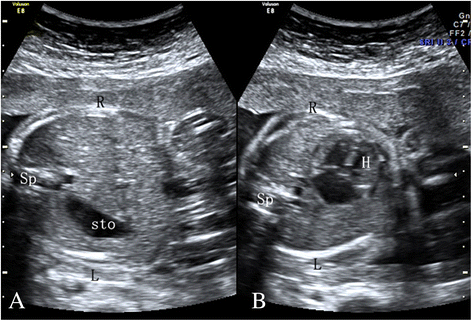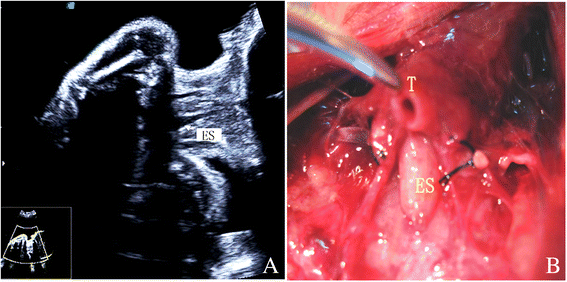Comparing levocardia and dextrocardia in fetuses with heterotaxy syndrome: prenatal features, clinical significance and outcomes
- PMID: 29169330
- PMCID: PMC5701355
- DOI: 10.1186/s12884-017-1579-y
Comparing levocardia and dextrocardia in fetuses with heterotaxy syndrome: prenatal features, clinical significance and outcomes
Abstract
Background: To investigate the differences in cardiovascular disease, extracardiac anomalies and outcomes between fetuses with levocardia and dextrocardia.
Methods: Clinical demographics, prenatal features, postnatal characteristics and the outcomes of fetuses with levocardia or dextrocardia were recorded and analyzed.
Results: Sixty-five fetuses with dextrocardia and thirty-eight fetuses with levocardia were enrolled. Right ventricle outlet obstruction, atrioventricular septal defect and intestinal malrotation were common in both groups. Univentricular physiology, transposition of the great arteries and esophageal atresia were more frequent in fetuses with levocardia, whereas abnormal pulmonary venous connection, double outlet of right ventricle, left ventricle outlet obstruction and brain abnormalities were more frequent in the dextrocardia group. The accuracy of evaluating cardiac malformations was high, but the sensitivity in assessing extracardiac abnormalities was low.
Conclusions: Although the disorders have certain overlapping features, there are several differences between fetuses with levocardia and dextrocardia. These findings might improve patient counseling and perinatal management.
Keywords: Dextrocardia; Heterotaxy; Levocardia; Prenatal diagnosis.
Conflict of interest statement
Ethics approval and consent to participate
The study was approved by the ethics committee of The Second Xiangya Hospital of Central South University in China, the Chenzhou No.1 People’s Hospital in China, and the First Affiliated Hospital of University of South China, Maternal & child health center of Changsha and Zhuzhou. Written informed consent was obtained from all of the families.
Consent for publication
Written informed consent was obtained from parents for publication of clinical details, clinical images.
Competing interests
The authors declare that they have no competing interests.
Publisher’s Note
Springer Nature remains neutral with regard to jurisdictional claims in published maps and institutional affiliations.
Figures




References
-
- Jacobs JP, Anderson RH, Weinberg PM, Walters HL 3rd, Tchervenkov CI, Del Duca D, et al. The nomenclature, definition and classification of cardiac structures in the setting of heterotaxy. Cardiol Young 2007; 17(Suppl 2): 1–28. - PubMed
Publication types
MeSH terms
Supplementary concepts
Grants and funding
LinkOut - more resources
Full Text Sources
Other Literature Sources

